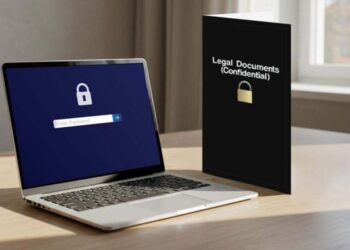Cyber security is very important in today’s digital world. With increasing internet usage and technology, it is essential to protect our personal data and devices from online threats. As more of our lives move to the digital space, we need to be aware of basic cyber security practices. This blog will discuss five fundamental laws of Cyber Security Certification that everyone should know. Following these simple laws can help keep us safe online and protect us from cyber crimes. Let’s learn about the five laws to maintain good cyber security and privacy in our digital lives.
Introduction to the 5 Laws of Cybersecurity
Cybersecurity is one of the most important aspects of the digital world that we live in today. With increasing reliance on technology, it is crucial for individuals and organizations to protect their digital assets and information from cyber threats. Over the years, cybersecurity experts have formulated some fundamental principles or “laws” that govern cybersecurity. In this blog post, we will explore the five laws of cybersecurity and how understanding and applying them can help build a robust security posture.
The First Law: Every Device is Vulnerable
The first law of cybersecurity states that every device that connects to the internet or digital networks is vulnerable to attacks or intrusions. No matter how secure a device may seem, there are always vulnerabilities that can potentially be exploited by cybercriminals if not properly defended. This is because technology is constantly evolving at a rapid pace, while cyber threats are also advancing simultaneously. Even devices with the latest security features may contain undiscovered vulnerabilities that can be exploited before patches are released. Therefore, organizations and individuals should not assume that their devices or networks are perfectly secure just because of certain security measures in place. Continuous monitoring, updates and defense-in-depth strategies are needed to protect devices from new and emerging threats.
The Second Law: Security is a Process, Not a Product
The second law emphasizes that cybersecurity is not a one-time implementation of security tools and technologies. It is an ongoing process that requires continuous effort, vigilance and refinement. Many organizations tend to view cybersecurity as a “set it and forget it” approach after deploying security products like firewalls, antivirus software etc. However, the dynamic nature of cyber threats means that security controls need to be regularly reviewed, tested and updated. New vulnerabilities are discovered every day in popular software, requiring patches and configuration changes. Attack techniques also evolve continuously, allowing old defenses to become outdated over time. Therefore, cybersecurity demands a process-oriented approach involving risk assessments, security awareness training, penetration testing and incident response planning on an ongoing basis.
The Third Law: Security is a Trade-Off
According to the third law, absolute security is impossible to achieve due to the trade-offs involved between-offs involved between-offs involved between security, privacy, functionality and cost. While strong security controls are necessary, they often come at the cost of user experience and productivity. For example, enforcing long and complex passwords improves security but reduces convenience. Similarly, monitoring all employee communications and activities enhances visibility but infringes on privacy. Tight access controls and encryption protect data in transit and at rest but require additional resources. Therefore, organizations must carefully evaluate risks and prioritize the most critical assets and data, then implement proportionate security controls based on a balanced risk-based approach. Over-securing systems can impact usability and compliance just as much as under-securing them impacts security and privacy.
The Fourth Law: Human Behavior is the Weakest Link
The biggest threat to any organization’s cybersecurity is often from within rather than outside. The fourth law acknowledges that human behavior and errors pose one of the greatest risks to security. Despite the best technologies, policies and awareness programs, social engineering attacks continue to succeed by exploiting human tendencies. Users may fall for phishing emails and click links or open attachments carrying malware. Privileged insiders with legitimate access can intentionally or accidentally cause security incidents through negligence or lack of proper training. Therefore, in addition to technical controls, it is important to focus on changing human behavior through repeated security awareness training, mock phishing exercises, and establishing a culture of security responsibility across the organization. Continuous monitoring can also help detect anomalous user activities that may indicate compromised or negligent behavior.
The Fifth Law: There is No Perfect Security
No matter how well-designed security controls are or how diligently security best practices are followed, the fifth law states that absolute security is impossible to achieve. Cybercriminals are highly motivated, well-funded and constantly innovating new techniques to circumvent existing defenses. Even the most security-conscious organizations are likely to experience security breaches and incidents at some point due to unforeseen vulnerabilities or sophisticated targeted attacks. Therefore, instead of aiming for perfect security which is unattainable, organizations should focus on managing risks through a defense-in-depth approach, rapid detection of incidents, and resilience to minimize impact even if breaches occur. Incident response plans, backups, and disaster recovery capabilities are critical to minimize downtime and data loss when security inevitably fails.
Applying the 5 Laws in Practice
To apply the five laws of cybersecurity effectively, organizations need to adopt a holistic risk-based approach and security program. Here are some key recommendations:
- Conduct regular risk assessments and prioritize mitigating threats to critical assets based on likelihood and impact.
- Implement layered security controls like firewalls, antivirus and vpn services, access controls, monitoring etc. but also test and update them continuously.
- Balance security, privacy, usability and costs based on the principle of proportionality.
- Focus on changing user behavior through ongoing security awareness training and mock phishing exercises.
- Establish robust incident response plans and test disaster recovery procedures periodically.
- Accept that breaches will occur and build resilience through backups, redundancies and ability to contain and recover from incidents swiftly.
- Continuously monitor networks and systems for threats using technologies like SIEM, firewall logs, endpoint detection etc.
- Adopt a “prevention through deterrence” mindset by publicizing security policies and consequences of violations clearly.
Case Studies: Lessons Learned from Cybersecurity Breaches
Real-world cybersecurity incidents provide valuable lessons that reinforce the five laws. The 2017 Equifax breach exposed sensitive personal data of 147 million customers due to unpatched vulnerabilities. It highlighted the risks of not applying security updates promptly (Law 1) and the importance of continuous monitoring (Law 2). The 2021 Colonial Pipeline ransomware attack led to gas shortages, emphasizing that critical infrastructure needs strong access controls and segmentation (Law 3). SolarWinds supply chain compromise in the same year infected thousands of entities by exploiting human trust (Law 4). Even the most sophisticated organizations like the NSA and FBI have faced breaches, showing that perfect security cannot be guaranteed (Law 5). Overall, these incidents underscore that risks need to be minimized through a holistic security program instead of relying on individual controls. They also emphasize the significance of resilience and response capabilities.
Future Trends and Challenges in Cybersecurity
Looking ahead, some of the major trends and challenges that will shape cybersecurity in the coming years include:
- Growth of IoT and operational technology environments expanding the attack surface
- Increasing use of cloud, mobility and remote work complicating access management
- Emergence of new threats like deepfakes, AI deception and supply chain attacks
- Skills shortage limiting ability to defend against advanced persistent threats
- Tightening regulations around data privacy, critical infrastructure protection
- Geopolitical conflicts and state-sponsored cyber espionage on the rise
- Organizations will need to adapt security programs continuously to address these evolving risks while balancing other priorities. Upskilling workforces, investing in new technologies, and fostering cross-industry collaboration will be important.
Conclusion: Embracing the 5 Laws for a Secure Future
In conclusion, the five laws of cybersecurity provide a simple yet powerful framework for organizations to build a robust security posture in today’s complex threat landscape, emphasizing the importance of integrating a Cyber Security Course into professional development initiatives. Understanding that vulnerabilities exist everywhere, security is a continuous process, trade-offs are inevitable, human errors pose risks, and perfection cannot be achieved helps manage expectations in a realistic manner. By embracing these fundamental principles, prioritizing risks, implementing controls based on a process-oriented approach, and focusing on resilience, organizations can enhance their ability to detect, respond to, and recover from cyber incidents while fostering innovation and growth. The five laws also empower security professionals to advocate for proportional resources and cultural change necessary to establish an effective security program. Overall, these laws remain highly relevant in today’s digital world and will continue to guide cybersecurity fundamentals for years to come.










